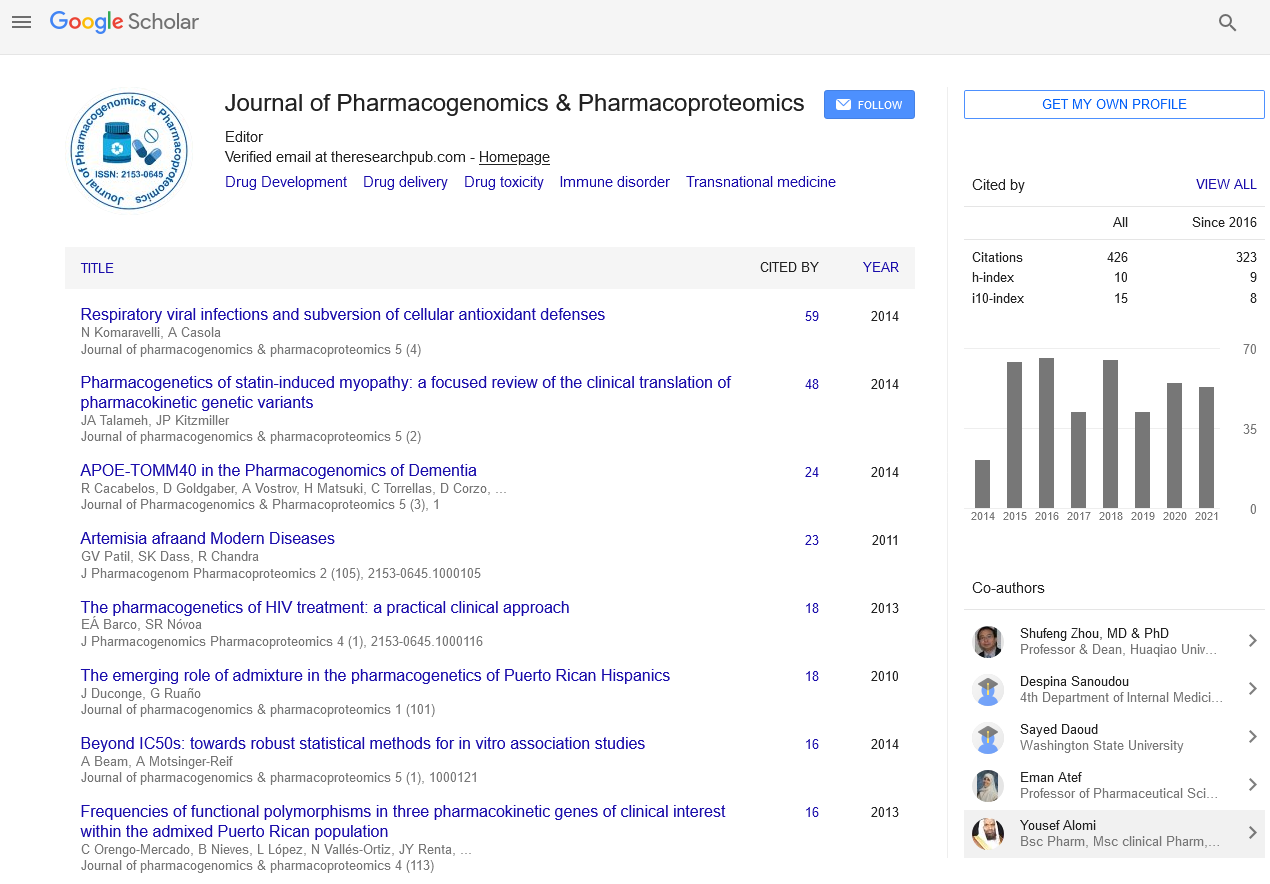Indexed In
- Open J Gate
- Genamics JournalSeek
- Academic Keys
- JournalTOCs
- ResearchBible
- Electronic Journals Library
- RefSeek
- Hamdard University
- EBSCO A-Z
- OCLC- WorldCat
- Proquest Summons
- SWB online catalog
- Virtual Library of Biology (vifabio)
- Publons
- MIAR
- Euro Pub
- Google Scholar
Useful Links
Share This Page
Journal Flyer

Open Access Journals
- Agri and Aquaculture
- Biochemistry
- Bioinformatics & Systems Biology
- Business & Management
- Chemistry
- Clinical Sciences
- Engineering
- Food & Nutrition
- General Science
- Genetics & Molecular Biology
- Immunology & Microbiology
- Medical Sciences
- Neuroscience & Psychology
- Nursing & Health Care
- Pharmaceutical Sciences
Abstract
Beyond SNPs and CNV: Pharmacogenomics of Polymorphic Tandem Repeats
Polymorphic Short Tandem Repeats (STR) emerged as a separate class of genetic mutation, which together with Single Nucleotide Polymorphisms (SNPs) and Copy Number Variations (CNVs) can explain variability in response to pharmacotherapy. STR draws interest in pharmacogenomics research because of their prevalence in the human genome, and their putative functional role as regulators of gene expression. Depending on the search algorithm, there are approximately 700,000–1,000,000 STR loci with 2-6 bp long motifs in the human reference genome. STR is non-randomly distributed across Untranslated Regions (UTRs), protein-coding sequences, and introns, and is overrepresented in the promoter regions of the human genes. The functional role of STR has been demonstrated by effects on gene expression, splicing, protein sequence, and association with pathogenic effects. An intrinsic property of STR is the high rate of mutation by expansion or contraction in the number of repeat units. Variation in the length of STR plays an important role in modulating gene expression, and STR is likely to be general regulatory elements which attenuate expression of multiple genes. Elucidating the effects of STR on gene expression may in part explain variability in drug response, something that cannot be achieved by focusing analysis exclusively on SNPs or CNV. This review summarizes the role of polymorphic STR in clinical manifestations including response to pharmacotherapy.


